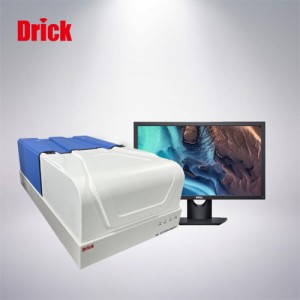1. Classification by detected gas
Oxygen transmittance tester:
Function: It is specially used to measure the permeability of materials to oxygen.
Application: Applicable to scenarios where oxygen resistance of materials needs to be evaluated, such as food packaging, pharmaceutical packaging, etc.
Principle: The Coulomb quantity method or the isobaric method may be used to calculate the transmittance by measuring the amount of oxygen passing through the sample in a unit time.
Carbon dioxide transmittance tester:
Function: It is specially used to measure the carbon dioxide transmittance of materials.
Application: Especially suitable for carbonated beverages, beer and other packaging materials test.
Principle: The differential pressure method or similar method may be used to calculate the permeability by detecting the penetration of carbon dioxide under the differential pressure on both sides of the sample.
Water vapor transmittance tester:
Function: Specially used to measure the permeability of materials to water vapor, also known as the permeability meter.
Application: Widely used in food, medicine, daily chemical products and other packaging materials moisture resistance test.
Principle: Electrolysis, infrared or weight gain methods may be used to calculate the transmittance by measuring the amount of water vapor passing through the sample per unit time.
2. Classification by test principle
Differential Pressure Method:
Principle: Through the auxiliary pressure equipment to maintain a certain pressure difference on both sides of the sample, and then detect the change in the pressure of the low pressure side caused by the penetration of the test gas through the film into the low pressure side, so as to calculate the transmission amount of the test gas.
Application: Pressure difference method is the main test method of air permeability detection, which is widely used in plastic film, composite film, high barrier material and other fields.
Isobaric Method:
Principle: Keep the pressure on both sides of the sample equal, and calculate the transmittance by measuring the flow or volume change of gas through the sample.
Application: The isobaric method is used in some specific situations, such as tests requiring precise control of the pressure environment.
Electrolytic Method:
Principle: The reaction of hydrogen and oxygen is generated by electrolysis of water, and the transmission rate of water vapor is calculated indirectly by measuring the amount of gas produced.
Application: Electrolysis method is mainly used for the measurement of water vapor transmittance, which has the advantages of fast and accurate.
Infrared Method: Infrared Method:
Principle: Using infrared sensor to detect the infrared radiation intensity of water vapor molecules, so as to calculate the transmittance of water vapor.
Application: infrared method has the advantages of high precision and non-contact measurement, and is suitable for occasions where the water vapor transmittance is required to be high.
3. Classification by test scope
The gas transmittance tester can also be classified according to the test range, such as the tester for different materials such as film, sheet, plate, and the comprehensive tester that can detect a variety of gas transmittance at the same time.
Send your message to us:
Post time: Jul-31-2024




